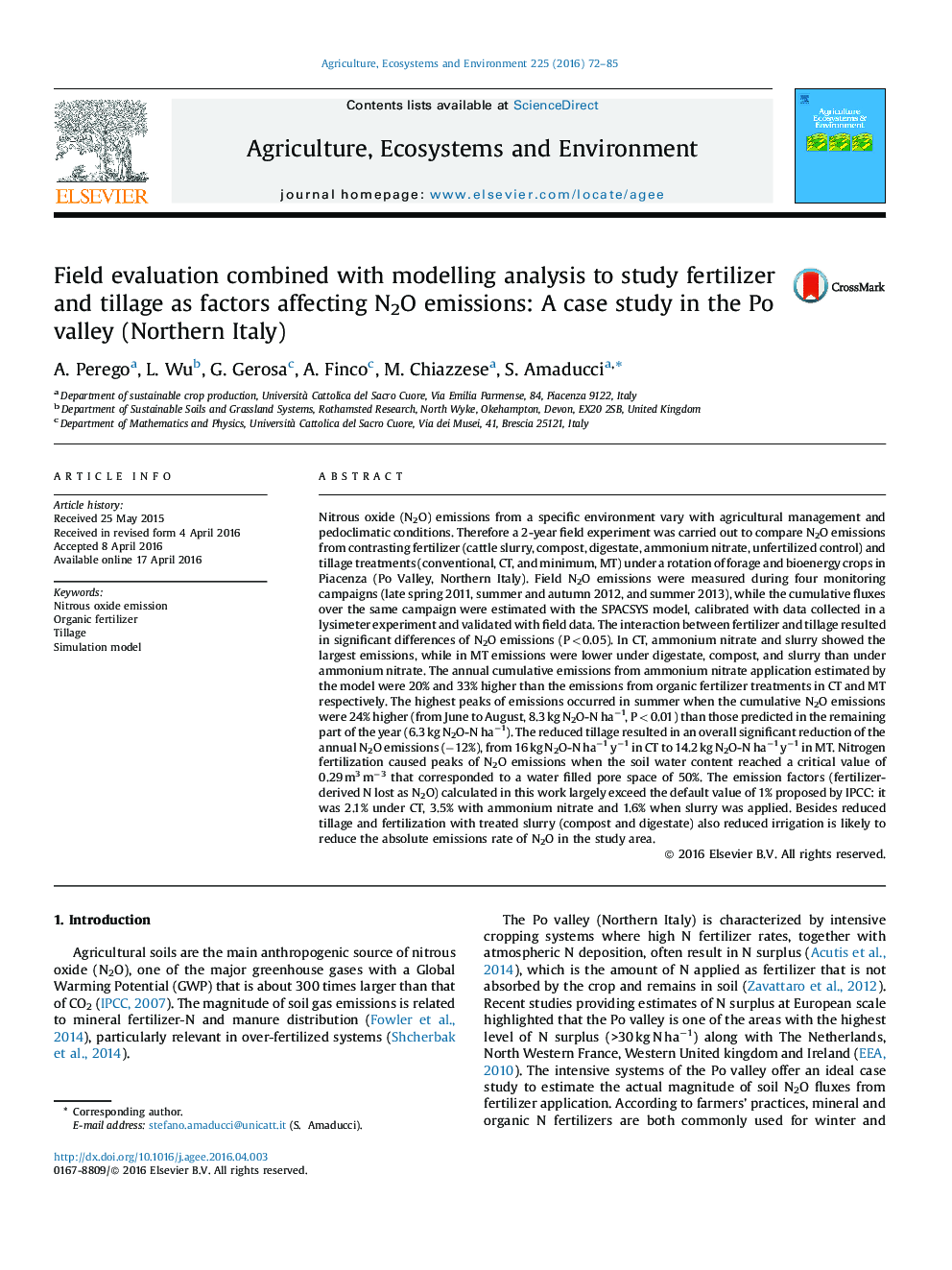| کد مقاله | کد نشریه | سال انتشار | مقاله انگلیسی | نسخه تمام متن |
|---|---|---|---|---|
| 2413558 | 1552027 | 2016 | 14 صفحه PDF | دانلود رایگان |

• Evaluation of N2O emissions from four fertilizers in conventional (CT) and reduced tillage (MT).
• Annual N2O flux was 26% higher with mineral fertilization than with organic fertilizers.
• The cumulative N2O fluxes were reduced by 12% under MT compared to CT.
• High soil water content induced the highest peaks of N2O emissions.
• Emission factors were 2.3%, 1.3%, and 3.5% under CT, MT, and mineral fertilization.
Nitrous oxide (N2O) emissions from a specific environment vary with agricultural management and pedoclimatic conditions. Therefore a 2-year field experiment was carried out to compare N2O emissions from contrasting fertilizer (cattle slurry, compost, digestate, ammonium nitrate, unfertilized control) and tillage treatments (conventional, CT, and minimum, MT) under a rotation of forage and bioenergy crops in Piacenza (Po Valley, Northern Italy). Field N2O emissions were measured during four monitoring campaigns (late spring 2011, summer and autumn 2012, and summer 2013), while the cumulative fluxes over the same campaign were estimated with the SPACSYS model, calibrated with data collected in a lysimeter experiment and validated with field data. The interaction between fertilizer and tillage resulted in significant differences of N2O emissions (P < 0.05). In CT, ammonium nitrate and slurry showed the largest emissions, while in MT emissions were lower under digestate, compost, and slurry than under ammonium nitrate. The annual cumulative emissions from ammonium nitrate application estimated by the model were 20% and 33% higher than the emissions from organic fertilizer treatments in CT and MT respectively. The highest peaks of emissions occurred in summer when the cumulative N2O emissions were 24% higher (from June to August, 8.3 kg N2O-N ha−1, P < 0.01) than those predicted in the remaining part of the year (6.3 kg N2O-N ha−1). The reduced tillage resulted in an overall significant reduction of the annual N2O emissions (−12%), from 16 kg N2O-N ha−1 y−1 in CT to 14.2 kg N2O-N ha−1 y−1 in MT. Nitrogen fertilization caused peaks of N2O emissions when the soil water content reached a critical value of 0.29 m3 m−3 that corresponded to a water filled pore space of 50%. The emission factors (fertilizer-derived N lost as N2O) calculated in this work largely exceed the default value of 1% proposed by IPCC: it was 2.1% under CT, 3.5% with ammonium nitrate and 1.6% when slurry was applied. Besides reduced tillage and fertilization with treated slurry (compost and digestate) also reduced irrigation is likely to reduce the absolute emissions rate of N2O in the study area.
Journal: Agriculture, Ecosystems & Environment - Volume 225, 1 June 2016, Pages 72–85